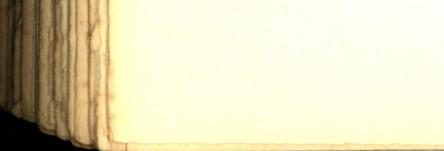CHAPTER XLIV
THE KING CHARLES SPANIELS
IN the fourth chapter of Macaulay's History of England we read of King Charles II. that " he might be seen before the dew was off the grass in St. James's Park, striding among the trees playing with his Spaniels and flinging corn to his ducks, and these exhibitions endeared him to the common people, who always like to see the great unbend."
Queen Elizabeth's physician, Dr. Caius, described these little Spaniels as " delicate, neate, and pretty kind of dogges, called the Spaniel gentle or the comforter," and further said " These dogges are little, pretty, proper, and fyne, and sought for to satisfie the delicatenesse of daintie dames and wanton women's wills,, instruments of folly for them to play and dally withall, to tryfle away the treasure of time, to withdraw their mindes from their commendable exercises. These puppies the smaller they be, the more pleasure they provoke as more meete playfellowes for minsing mistrisses to beare in their bosoms, to keepe company withall in their chambers, to succour with sleepe in bed, and nourishe with meate at board, to lie in their lappes, and licke their lippes as they ryde in their waggons, and good reason it should be so, for coursenesse with fynenesse hath no fellowship, but featnesse with neatnesse hath neighbourhood enough."
There would appear to be much divergence of opinion as to the origin of this breed, and the date of its first appearance in England, but it was certainly acclimatised here as early as the reign of Henry VIII., and it is generally thought that it is of Japanese origin, taken from Japan to Spain by
278
THE KING CHARLES SPANIELS 279
the early voyagers to the East, and thence imported into England. The English Toy Spaniels of to-day, especially the Blenheim variety, are also said by some to be related to some sporting Spaniels which belonged to Queen Mary about the year 1555, and might have been brought over from Germany. Mary kept a pack of Spaniels for hunting purposes.
There is another theory advanced, and with some reason that the English Toy Spaniel of the present day derived its origin from the Cocker Spaniel, as these larger dogs have the same colours and markings, black and tan, tricolour, and red and white. The Cocker also occasionally has the spot on the forehead which is a characteristic of the Blenheim.
Be the origin of the King Charles Spaniel, and its advent in this country, what it may, King Charles II. so much indulged and loved these little friends that they followed him hither and thither as they pleased, and seem to have been seldom separated from him. By him they were loved and cherished, and brought into great popularity ; in his company they adorn canvas and ancient tapestries, and are reputed to have been allowed free access at all times to Whitehall, Hampton Court, and other royal palaces.
There are now four recognised varieties of the English Toy Spaniel, or, more properly speaking, five, as the Marlborough Blenheims are considered a distinct type. The latter are said by some to be the oldest of the Toy Spaniels ; by others to have been first brought over from Spain during the reign of Charles II. by John Churchill, first Duke of Marlborough, from whose home, Blenheim Palace, the name was derived, and has ever since been retained.
If we may take the evidence of Vandyck, Watteau, Francois Boucher, and Greuze, in whose pictures they are so frequently introduced, all the toy Spaniels of bygone days had much longer noses and smaller, flatter heads than those of the present time, and they had much longer ears, these in many instances dragging on the ground.
The Marlborough Blenheim has retained several of the

